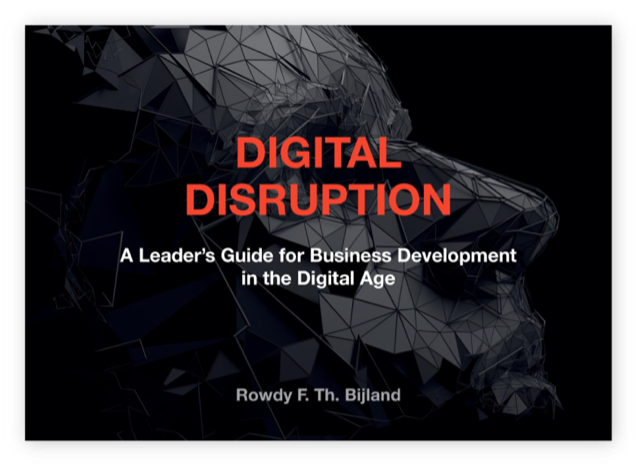Businesses must constantly evolve to stay relevant and competitive in today's fast-paced digital world. This evolution can be orchestrated effectively through strategic planning using the Innovation Ambition Matrix, described in the book “Alchemy of Growth” by M. Bahgai, S. Coley and D. White in 1999. This framework divides growth opportunities into three horizons: Horizon 1, focusing on the core business, products, and services that currently drive profits and cash flow; Horizon 2, targeting emerging opportunities expected to generate sustainable income in the near future; and Horizon 3, concentrating on disruptive ideas poised to transform the business and boost profits in the long term. Understanding the unique risk profiles, value, and time factors associated with each horizon is crucial for successful deployment.
Horizon 1: Core Business, Products, and Services
Focus and Value
Horizon 1 is dedicated to the core business activities that are the backbone of a company's current revenue stream. This includes optimizing existing products and services, enhancing operational efficiencies, and improving customer experiences. The primary value here lies in maintaining and expanding the company's current market position while generating reliable profits and cash flow.
Risks and Time Factors
The risks associated with Horizon 1 are generally lower compared to the other horizons, as it involves incremental improvements and optimization of existing operations. However, complacency can be a significant risk, as over-reliance on existing revenue streams without innovation can lead to stagnation. The time frame for returns in Horizon 1 is immediate to short-term, making it essential for sustaining business operations.
Horizon 2: Emerging Opportunities
Focus and Value
Horizon 2 targets the identification and development of emerging opportunities that are not yet core but have the potential to become significant revenue generators. This could involve expanding into new markets, developing adjacent products, or leveraging new technologies. The value in Horizon 2 lies in creating a pipeline of future growth avenues that can ensure medium-term sustainability and competitive advantage.
Risks and Time Factors
Horizon 2 carries a moderate level of risk due to uncertainties surrounding market adoption, technological feasibility, and competitive response. The time frame for realizing returns in Horizon 2 is medium-term, often requiring several years of investment and development before yielding significant results. Managing these risks involves rigorous market analysis, pilot testing, and agile adaptation to market feedback.
Horizon 3: Disruptive Ideas
Focus and Value
Horizon 3 is about visionary thinking and pursuing disruptive ideas that have the potential to redefine the industry and drive long-term transformation. This involves exploring cutting-edge technologies, new business models, and radical innovations that could lead to significant profit growth in the future. The value in Horizon 3 is the potential for exponential returns and establishing a market-leading position.
Risks and Time Factors
The risks in Horizon 3 are the highest due to the speculative nature of disruptive innovation. Many initiatives in this horizon may fail or take a long time to mature. The time frame for Horizon 3 is long-term, often requiring substantial investment in R&D, market education, and infrastructure before achieving profitability. Companies must be prepared for a higher tolerance for failure and longer periods without returns.
The Innovation Ambition Matrix in Practice
A prime example of a digital business successfully deploying the Innovation Ambition Matrix is Amazon. Here's how Amazon has navigated through each horizon:
Horizon 1: Core Business
Amazon's core business revolves around its e-commerce platform, which has been continuously optimized for better customer experience, logistics efficiency, and inventory management. These improvements have solidified Amazon's market dominance and generated consistent profits and cash flow.
Horizon 2: Emerging Opportunities
Amazon Web Services (AWS) represents a Horizon 2 initiative. Initially a non-core business, AWS has grown into a significant revenue stream by leveraging Amazon's infrastructure and expertise in cloud computing. This service has created a new, sustainable income source that complements its core e-commerce operations.
Horizon 3: Disruptive Ideas
Amazon's investments in artificial intelligence (e.g., Alexa) and automation (e.g., Amazon Robotics) illustrate its Horizon 3 endeavours. These technologies have the potential to disrupt various industries, from home automation to logistics, positioning Amazon for future transformational growth.
Challenges in Deploying the Innovation Ambition Matrix
Resource Allocation
One of the main challenges is balancing resource allocation across the three horizons. Over-investing in Horizon 1 can lead to short-term gains but long-term vulnerability, while excessive focus on Horizon 3 can jeopardize current business stability.
Cultural Resistance
Organizations may face internal resistance to change, particularly when shifting focus from Horizon 1 to more speculative horizons. Encouraging a culture that embraces innovation and tolerates calculated risks is essential.
Risk Management
Effectively managing the different risk profiles associated with each horizon is crucial. Companies must develop robust risk assessment and mitigation strategies to navigate uncertainties in Horizons 2 and 3.
Strategic Alignment
Ensuring that initiatives across all three horizons align with the overall strategic vision and goals of the company can be complex. Continuous strategic reviews and adjustments are necessary to maintain coherence and focus.
External Influences
Finally, external factors such as market conditions, regulatory environments, and technological advancements can impact the success of initiatives in each horizon. Companies must remain agile and responsive to these external influences.
The Innovation Ambition Matrix offers a structured approach to driving growth and innovation
The Innovation Ambition Matrix offers a structured approach to driving growth and innovation in a digital business. By understanding and strategically managing the unique characteristics of each horizon, companies can balance short-term profitability with long-term transformational growth. While challenges and risks are inherent in this journey, the rewards of a well-executed innovation strategy can be substantial, ensuring sustained competitive advantage and market leadership in an ever-evolving digital landscape.
About Rowdy Bijland
Rowdy is a strategic and creative thinker. He acts as a digital business partner with the mission to support leaders, their teams and organizations, to drive digital business strategy, innovation and transformation, with the aim to maximize potential and to contribute to the creation of sustainable value and meaningful impact. Recently, he released his first publication “Digital Disruption: A leader’s Guide for Business Development in the Digital Age” which is available at www.dutchgreenfields.com. Furthermore, Rowdy provides 1:1 digital business coaching for leaders worldwide. He is also moderator and keynote speaker for companies and organizations.
To connect with Rowdy please follow him on Linkedin or send him an e-mail at r.bijland@dutchgreenfields.com




